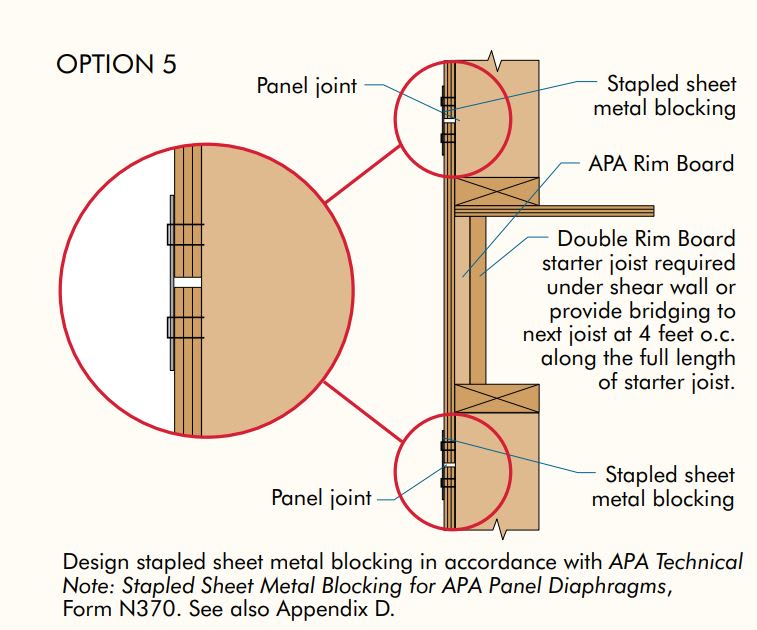jdgengineer
Structural
- Dec 1, 2011
- 748
I have a project where we are running the exterior wall plywood vertically. The building is two story with a relatively tall first plate height. The contractor is trying to run a continuous panel from mudsill (below 1st floor joists) to 1st floor top plates but will be about 2" short. He'd like to block right under the top plates and splice the plywood on the block. All edges will be fully blocked with edge nailing. The upper plywood panel would run all the way up to the 2nd floor top plates.
With this approach all of the horizontal splices of the plywood will align. I know it's general practice to want an offset in the splice locations, but I can't find any requirement in the NDS SPDWS or IBC. This is a fully blocked and nailed shear wall.
Is this a requirement or just general common practice? Does anyone know of a code reference that requires the offset in splice locations?
With this approach all of the horizontal splices of the plywood will align. I know it's general practice to want an offset in the splice locations, but I can't find any requirement in the NDS SPDWS or IBC. This is a fully blocked and nailed shear wall.
Is this a requirement or just general common practice? Does anyone know of a code reference that requires the offset in splice locations?


